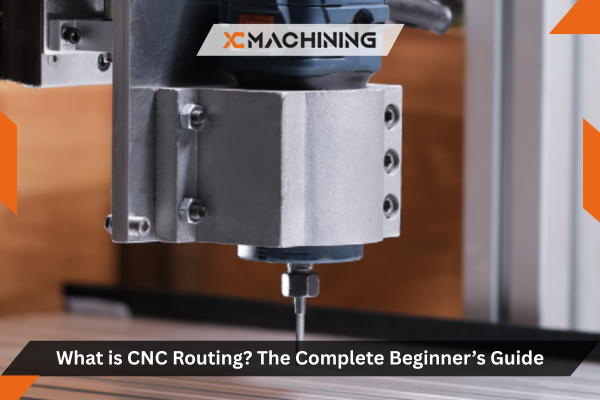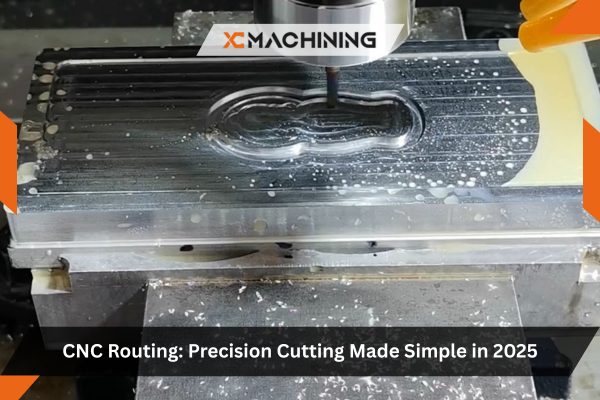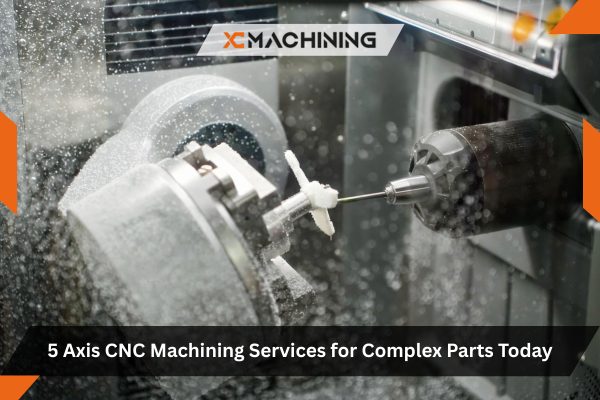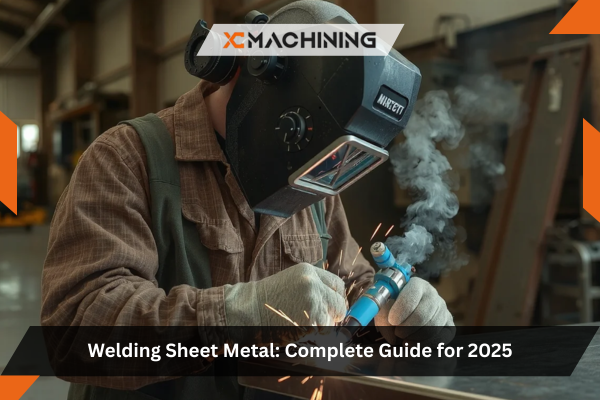What This Guide Covers
If you’ve ever wondered what is CNC routing or how those intricate wooden signs, custom furniture pieces, and precision-cut parts are made, you’ve come to the right place. After 14 years working with CNC routing machines and helping hundreds of clients bring their designs to life, I’ve learned that CNC routing is one of the most versatile and accessible digital fabrication technologies—yet it remains misunderstood by many.
In this comprehensive beginner’s guide:
- Clear explanation of what CNC routing is and how it works
- Types of CNC routing machines and their capabilities
- Common materials and applications
- CNC routing vs. other fabrication methods
- How to choose custom CNC routing services
- Getting started with your first CNC routing project
Whether you’re a woodworker exploring CNC wood routing services, a business owner researching CNC routing company options, or someone curious about this technology, this guide provides the foundation you need to understand and leverage CNC routing.
Inhaltsübersicht
What is CNC Routing? The Basics
Last month, a furniture designer came to me with a hand-drawn sketch of an elaborate headboard featuring intricate floral patterns. She’d spent weeks trying to find woodworkers who could carve it by hand—quotes ranged from $4,500 to $8,000, and timelines stretched 8-12 weeks. We used a CNC routing machine to produce it in 6 hours for $850. The precision was perfect, every detail crisp, and she could order more anytime at the same price. That’s the power of CNC routing.
The Simple Definition
CNC-Fräsen is a computer-controlled cutting process where a spinning cutting tool (router bit) moves in three dimensions to cut, carve, and shape materials based on digital designs. CNC stands for “Computer Numerical Control”—essentially, a computer controls the machine’s movements with extreme precision.
Wie CNC-Fräsen funktioniert
The basic process:
Step 1: Design Creation
- Create or import a digital design (CAD file)
- Define cutting paths, depths, and operations
- Generate toolpaths using CAM software
- Choose appropriate router bits and cutting parameters
Step 2: Material Setup
- Secure material to the CNC routing machine bed
- Use vacuum hold-down, clamps, or fixtures
- Set work zero (reference point for cutting)
- Verify material thickness and dimensions
Step 3: Machine Operation
- Load toolpath program into CNC controller
- Router spindle spins at high speed (8,000-24,000 RPM)
- Machine moves cutting tool through material on X, Y, and Z axes
- Material is removed layer by layer based on programmed paths
Step 4: Finishing
- Remove finished part from machine
- Clean up any remaining tabs or holding features
- Sand, finish, or paint as needed
- Quality check dimensions and details
Key characteristic: Unlike manual routing where a person guides the tool, a CNC routing machine follows programmed instructions with precision impossible for human hands to match.
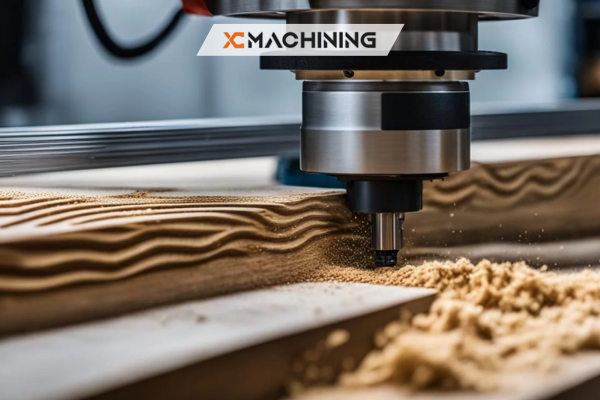
Types of CNC Routing Machines
Understanding different machine types helps you choose the right CNC routing service or equipment for your needs:
| Maschinentyp | Typical Size | Am besten für | Preisspanne |
|---|---|---|---|
| Desktop CNC Router | 12″×12″ to 24″×24″ | Hobbyists, small crafts, prototypes | $2,000-$8,000 |
| Small Format Router | 24″×24″ to 48″×48″ | Small shops, signs, custom woodwork | $8,000-$25,000 |
| Standard Industrial Router | 48″×96″ to 60″×120″ | Full sheet processing, production work | $25,000-$80,000 |
| Large Format Router | 60″×120″ to 144″×240″ | Sign shops, architectural elements | $60,000-$150,000+ |
| 5-Axis CNC Router | Various sizes | Complex 3D shapes, aerospace parts | $100,000-$500,000+ |
Machine Components
Essential parts of a CNC routing machine:
Spindel:
- High-speed motor holding the cutting tool
- Typical speeds: 18,000-24,000 RPM for wood, lower for metals
- Power: 1.5 HP (desktop) to 15+ HP (industrial)
Gantry and rails:
- Framework supporting the spindle
- Precision linear guides enabling smooth motion
- Belt-driven, rack-and-pinion, or ball screw systems
Control system:
- Computer brain directing all movements
- Reads G-code (machine instruction language)
- Controls spindle speed, feed rate, and tool position
Work bed:
- Surface where material is secured
- Vacuum hold-down, T-slot tracks, or sacrificial spoil board
- Must be flat and rigid
Materials You Can Cut with CNC Routing
One of CNC routing’s biggest advantages is material versatility:
Wood and Wood Products
Most common CNC routing applications:
Solid wood:
- Hardwoods: Oak, maple, walnut, cherry
- Softwoods: Pine, cedar, poplar
- Applications: Furniture, cabinetry, decorative elements
Sheet goods:
- Plywood: All grades and thicknesses
- MDF: Medium-density fiberboard (very popular for routing)
- Particleboard: Budget-friendly option
- Baltic birch: High-quality plywood for precision work
Why wood dominates: CNC wood routing services are the most common because wood cuts cleanly, machines easily, and suits countless applications. A quality CNC routing company typically does 60-80% of their work in wood materials.
Real example: I work with a cabinet maker who produces 200+ custom kitchen cabinet doors monthly using CNC wood routing services. What once took two skilled craftsmen 3 days to produce, the CNC-Fräsen machine completes in 4 hours with perfect consistency.
Kunststoffe
Common plastic materials:
- Acrylic (Plexiglass): Signs, displays, lighting
- Polycarbonate: Impact-resistant applications
- PVC: Outdoor signage, decorative elements
- HDPE: Cutting boards, marine applications
- Delrin: Engineering parts, tooling
Vorteile: Plastics machine cleanly, come in many colors, and offer weather resistance for outdoor use.
Metals (Soft)
CNC routing machines can cut soft metals:
- Aluminum: Most common metal for CNC routing
- Brass: Decorative elements, architectural details
- Copper: Artistic pieces, electrical components
Limitation: Standard CNC routing machines handle only soft metals. Harder metals like steel require CNC milling machines with different capabilities.
Verbundwerkstoffe
Advanced materials:
- Carbon fiber sheets
- Fiberglass composites
- Foam core materials
- Corian and solid surface materials
Common CNC Routing Applications
Based on working with diverse clients seeking custom CNC routing solutions, these applications dominate:
Signage and Graphics
Most popular CNC routing service:
- Business signs (dimensional letters, logos)
- Wayfinding and directional signs
- Decorative wall art
- Carved plaques and awards
- Trade show displays
Why CNC excels: Perfect repeatability, intricate detail capability, and professional finish quality.
Furniture and Cabinetry
Production applications:
- Cabinet doors with carved panels
- Custom furniture components
- Decorative trim and moldings
- Joinery (dovetails, mortise and tenon)
- Inlays and decorative elements
Business value: Furniture makers use CNC-Fräsdienstleistungen to increase production while maintaining custom quality.
Architektonische Elemente
Building and design:
- Wall panels and room dividers
- Ceiling tiles and decorative elements
- Ornamental brackets and corbels
- Custom doors and gates
- Handrails and balustrades
Prototyping and Manufacturing
Industrial applications:
- Product prototypes
- Jigs and fixtures
- Molds and forms
- Gaskets and spacers
- Custom parts and components
CNC Routing vs. Other Fabrication Methods
Understanding how CNC routing compares to alternatives helps you choose the right approach:
CNC Routing vs. Laser Cutting
CNC Routing advantages:
- Cuts thicker materials (up to several inches)
- No burn marks or heat-affected zones
- Better for wood (lasers can burn edges)
- Can create 3D shapes and depth variations
- Lower operating costs for thick materials
Laser Cutting advantages:
- Faster for thin materials (up to 1/2″)
- Finer detail capability
- No tool wear
- Cuts reflective materials better
- Sealed edges on plastics
CNC Routing vs. Manual Routing
CNC advantages:
- Perfect repeatability (make 1,000 identical pieces)
- Complex shapes impossible by hand
- Consistent quality regardless of operator skill
- Much faster for production runs
- No skilled craftsman required
Manual advantages:
- Lower equipment investment
- Better for one-off custom pieces
- More portable and flexible
- No programming required
Choosing a CNC Routing Service
If you’re not ready to invest in equipment, finding the right CNC routing company matters. Here’s what to evaluate:
Questions to Ask
About capabilities:
- What’s your maximum material size?
- What materials do you work with?
- Can you handle 3D carving or just 2.5D cutting?
- Do you offer design services or just cutting?
- What file formats do you accept?
About quality:
- Can you provide samples of similar work?
- What tolerances can you hold?
- Do you offer finishing services?
- What’s your typical lead time?
About pricing:
- How do you price jobs? (by time, square footage, complexity?)
- Is there a minimum order?
- Do you offer volume discounts?
- What’s included in the price?
Finding Local Services
Searching for “CNC routing services near me” or “CNC wood routing services near me”:
Advantages of local providers:
- Easier communication and collaboration
- Can inspect samples and facility
- Faster turnaround (no shipping delays)
- Support local business
- Build long-term relationships
National services:
- Sometimes better pricing (economies of scale)
- Advanced capabilities
- Online platforms make ordering easy
- Good for simple, well-defined jobs
Getting Started with Your First CNC Routing Project
Ready to try CNC routing? Here’s practical advice from someone who has guided hundreds of first-time customers:
Project Selection
Start simple:
- Single-level cuts before attempting 3D carving
- Standard materials (MDF or plywood for wood routing)
- Reasonable size (within common sheet dimensions)
- Clear design without extreme detail
Good first projects:
- Simple wooden signs with cut-out letters
- Cabinet doors with basic panel designs
- Wall art with silhouette designs
- Name plates or address plaques
- Coasters or trivets
Design Preparation
File requirements:
- Vector files preferred (AI, DXF, SVG formats)
- CAD files work (SolidWorks, Fusion 360)
- High-resolution images can be converted (though less precise)
- Specify dimensions clearly
Design tips:
- Minimum feature size: 1/8″ for wood routing
- Corner radius: Router bits are round, so inside corners have radius
- Material thickness: Know this before designing
- Cutting depth: Specify how deep to cut
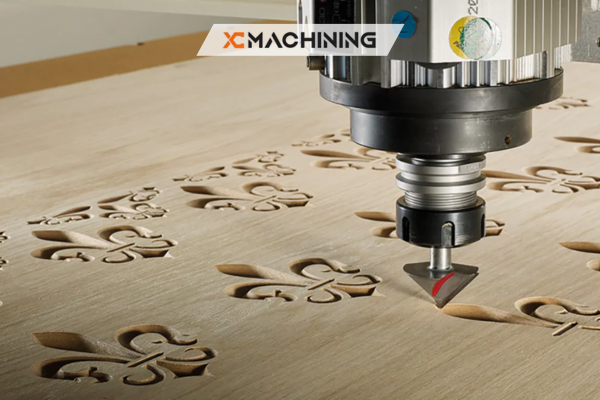
Working with Your CNC Routing Company
Communication is key:
- Explain intended use and requirements
- Discuss material options
- Ask about finishing recommendations
- Request timeline and pricing
- Clarify revision policies
Be realistic:
- CNC routing isn’t magic (physics and material limits apply)
- Intricate details cost more (time = money)
- Material choice affects results
- Some designs work better than others
Kostenüberlegungen
Understanding CNC routing pricing helps set realistic expectations:
Factors Affecting Cost
Machine time:
- Most CNC routing services charge primarily for machine time
- Complex cuts take longer than simple profiles
- 3D carving significantly slower than 2D cutting
Material cost:
- Material type and thickness
- Sheet utilization (how efficiently design fits)
- Waste material (some designs waste more)
Setup and programming:
- First-time designs require programming
- Simple cuts have minimal setup
- Complex 3D work requires more programming time
Finishing:
- Sanding, painting, or staining adds cost
- Edge finishing important for some applications
- Assembly if multiple components
Typical Pricing
Rough estimates (vary significantly by region and shop):
- Simple 2D cuts in wood: $1-$3 per minute of machine time
- Complex 3D carving: $2-$5 per minute
- Material markup: 30-100% over retail
- Setup fees: $50-$200 for first-time jobs
- Minimum charges: $50-$150 common
Example: A 24″×24″ wooden sign with basic text cutout might cost $85-$150 total (material, machine time, finishing).
Future of CNC Routing
The CNC routing industry continues evolving:
Current trends:
- More affordable entry-level machines
- Better software (easier to use, more powerful)
- Automated tool changing (lights-out operation)
- AI-assisted optimization
- Cloud-based design and ordering platforms
Accessibility increasing:
- Desktop CNC routing machines under $2,000
- Makerspaces offering CNC router access
- Online CNC routing services accepting digital orders
- Training resources and tutorials widely available
Schlussfolgerung
After 14 years working with CNC routing technology and helping hundreds of people realize their designs, I’ve learned that CNC routing is one of the most versatile and accessible digital fabrication methods available. Whether you’re a hobbyist creating custom gifts, a business producing products, or a designer bringing concepts to life, CNC routing offers precision, repeatability, and creative freedom that manual methods simply cannot match.
Understanding what is CNC routing and how it works opens doors to countless creative and commercial applications. From simple wooden signs to complex 3D carvings, from prototyping products to producing custom furniture, a CNC routing machine can transform digital designs into physical reality with remarkable precision and efficiency.
For those not ready to invest in equipment, CNC routing services make this technology accessible to anyone. Local CNC wood routing services or national CNC routing companies can bring your designs to life, whether you need one custom piece or thousands of identical parts.
The barrier to entry has never been lower. Desktop machines cost less than a used car. Custom CNC routing services will work from your sketches or photos. Online tutorials teach the skills. The only real limitation is imagination.
If you’ve been curious about CNC routing, now is the time to explore. Start with a simple project, work with a local CNC routing company, or invest in entry-level equipment. The capabilities this technology offers—precision, repeatability, complexity, and efficiency—will transform how you approach making things.
CNC routing isn’t just for professionals anymore. It’s for makers, entrepreneurs, artists, and anyone who wants to turn digital designs into physical creations. Welcome to the world of CNC routing—where imagination meets precision.
Häufig gestellte Fragen
What does a CNC router cost?
Prices start at around $500 for basic desktop machines and can exceed $50,000 for industrial models.
Is CNC routing easy to learn?
Yes. With user-friendly software and strong community support, beginners can start producing parts within days.
What can you make with a CNC router?
From signs and coasters to furniture panels and enclosures, CNC routers are extremely versatile.
How accurate are CNC routers?
Most desktop routers offer accuracy of ±0.005″ to ±0.01″, while industrial machines can go even tighter.

